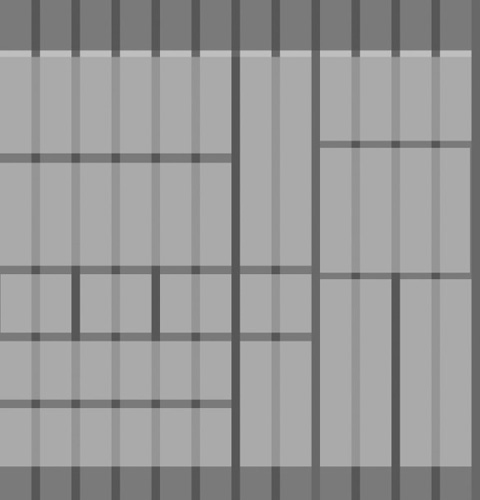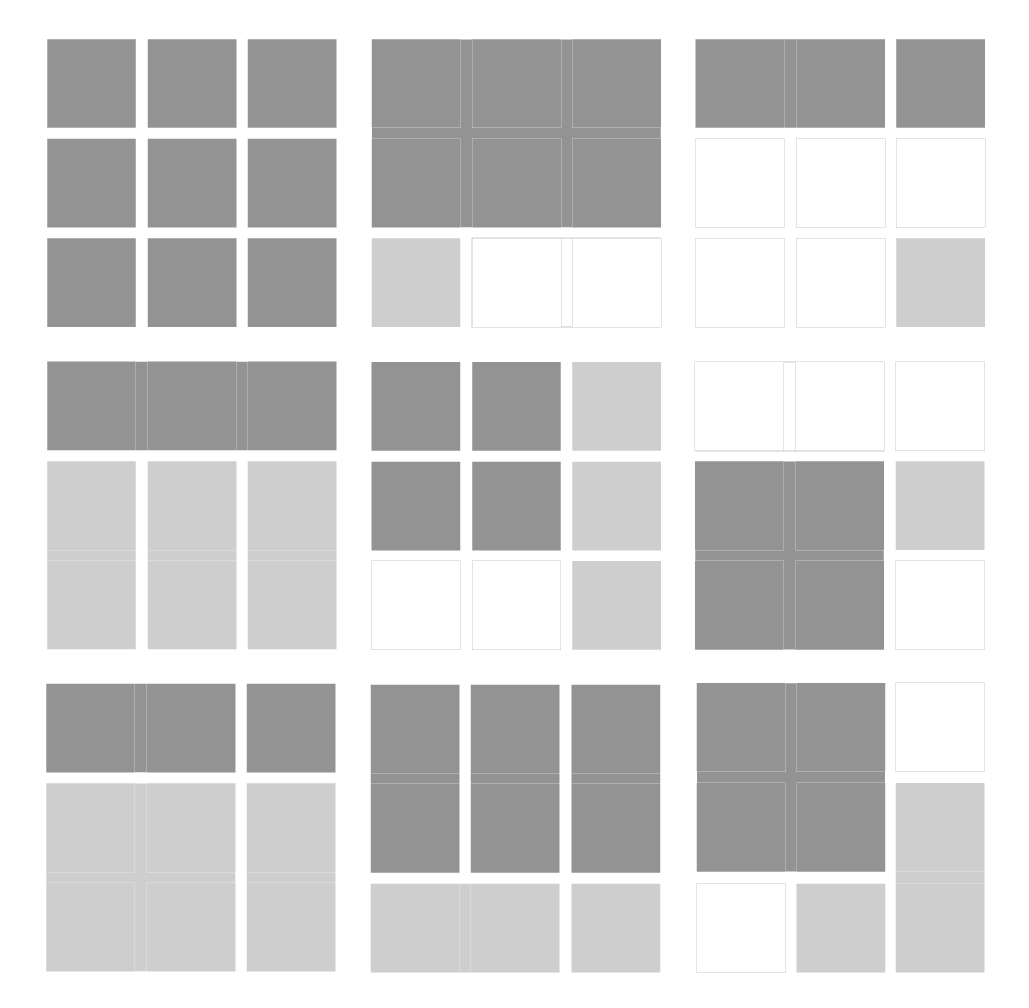Table Of Content
- The lesson of grids—constraints invest creativity
- Techniques for a Newspaper Layout with CSS Grid and Border Lines Between Elements
- Topics in This Article
- CSS Grid Can Do Auto Height Transitions
- Grid Layouts in Web Design: 6 Rules of Thumb
- What are the 4 types of grids?
- Building a Conference Schedule with CSS Grid

Used properly, they can enhance the user experience by creating predictable patterns for users to follow. From designer’s point of view they allow for an organized methodology for planning systematic layouts. One of the most powerful features of CSS Grid is its ability to create responsive layouts with ease.
The lesson of grids—constraints invest creativity
Create a responsive layout with CSS Grid - Creative Bloq
Create a responsive layout with CSS Grid.
Posted: Sun, 31 Jan 2021 08:00:00 GMT [source]
We explored seven common types of grid systems including rule of thirds, golden section, single-column, multi-column, modular, baseline and responsive. In graphic design, a layout that has uniformly-sized columns and no rows is often called a “symmetrical columnar grid”. For centuries, columnar grids were the dominant type of grid used in page design. CSS Grid is a two-dimensional layout system that allows you to create grid-based layouts with rows and columns. It provides precise control over the positioning and sizing of elements, making it ideal for building complex, grid-like structures. CSS Grid introduces a new way of thinking about layout, moving away from traditional methods like floats and positioning.
Techniques for a Newspaper Layout with CSS Grid and Border Lines Between Elements

Figma, one of our favorite design tools, offers powerful features for setting up reusable grids, enhancing your efficiency and consistency when using grids and layouts in UI design. Every design project has unique requirements, and you can customize the 8-point grid system to suit your specific needs. Feel free to adjust the base unit (8px) and its multiples to achieve the desired visual effect if necessary. Modifying the grid allows you to strike the perfect balance between precision and adaptability, ensuring your design aligns flawlessly with your project objectives.
Topics in This Article
The margins are independently sized and are the same between the left and right sides. Grid-based layouts have always been around in web design, however, they’ve become quite trendy in the last year as we started to notice them even more in recently launched high-end websites. In short, the grid system serves as a common graphic language for designers and developers to create order among all elements in a website.
The role of gutters is to form negative space (no matter how big or small) between the columns and rows. In the plainest terms, gutters are the space between columns and the space between rows. Gutters are especially significant for masonry layout, where gutter width is one of most significant details of the layout.
Your “grid system” could simply be a decision made in the design process to use a regular grid. Your choice is limited to “how many columns of the grid this element will span”. This structure on a page is there to help designers arrange content. Of course, most of the time, the lines aren’t visible, but the structure helps you manage your proportions and alignment between the elements that are featured on the web page. Our 100-pixel tall tracks won't be very useful if we add content into those tracks that is taller than 100 pixels, in which case it would cause an overflow. It might be better to have tracks that are at least 100 pixels tall and can still expand if more content becomes added.
In the first lesson, you’ll learn the difference between visual design elements and visual design principles. You’ll also learn how to effectively use visual design elements and principles by deconstructing several well-known designs. These systems help designers organize content and create visually pleasing layouts. You'll find grid systems helpful if you want to create professional and effective graphic designs. Making masonry a simple and separate layout type would avoid the work necessary to keep Grid and Masonry working together in combination — both now and in the long term.
Here are five best practices to keep in mind when working with responsive grids. When it comes to the anatomy of a responsive grid, there are five key terms every web designer should know. Gain a solid foundation in the philosophy, principles and methods of user experience design. That’s not to say that there’s no resistance to using the grid system.
Aligns a grid item inside a cell along the inline (row) axis (as opposed to align-self which aligns along the block (column) axis). That’ll create a grid that’s four columns wide by three rows tall. The middle row will be composed of two main areas, one empty cell, and one sidebar area. The text, images and white spaces come together to create a harmonious reading experience. This grid system ensures consistency between different elements like headings and body copy across pages or screens making sure they don’t dance off into disarray.

To avoid losing out to the competition, it’s crucial that your websites are functional and user-friendly across all devices and browsers. Luckily, by mastering responsive grids, it’s never been easier to achieve that goal. The first step in creating a responsive grid system is to determine your target screen size. This step will help you decide what kind of grid layout you should use, as well as which elements should appear at different breakpoints.
You can also learn with your fellow course-takers and use the discussion forums to get feedback and inspire other people who are learning alongside you. You and your fellow course-takers have a huge knowledge and experience base between you, so we think you should take advantage of it whenever possible. In the second lesson, you’ll learn about the science and importance of color. You’ll gain a better understanding of color modes, color schemes and color systems. You’ll also learn how to confidently use color by understanding its cultural symbolism and context of use. A set of Brno Chairs, designed by Ludwig Mies van der Rohe in 1930.
Low-tech and inexpensive, they’re also essential to keeping users happy and securing their trust for designers’ brands. These options in CSS Grid allow you to create something much more dynamic and flexible in interesting ways. You can create two stages of flexibility, because the fr-unit sized columns grow and shrink in a separate stage from the minmax()-sized columns. The max-content and min-content values let you size the columns based on the content size, rather than sizing the content based on the column size. The fr units can easily be used to create compound or asymmetrical grids, where the columns are different sizes. The modular grid layout, as the name suggests, creates modules by dividing the page vertically with both columns and rows.
For example, you can enter the desired value in the “Columns” field to specify the number of columns you want for your grid. The same goes for the Gutter field, which defines the spacing between columns, and margin fields. In grid-based UI Design, knowing how and when to use clever tricks is the key to delivering precise and aesthetically pleasing design. For mobile and tablet devices, you can use the same number of columns or less, usually 2 or 4, respectively.
But it’s really up to the designer to decide how many columns they find necessary. Modules are the units of space created from the intersection of rows and columns. The rule of thirds is a web design concept based on the principles of visual perception. According to the rule of thirds, designers should divide webpages into nine equal parts with two vertical and two horizontal lines. By placing the most important elements on the ‘thirds’ of the grid, users’ eyes will be naturally more drawn to them—which will influence how they navigate the site. Grids make it easier for users to find what they need by providing visual cues about where things are on the page.
When you resize or modify elements within the grid, the grid structure will automatically adjust to accommodate the changes while maintaining the desired layout. As mentioned, Figma easily lets you make the most out of grids and layouts in UI design. Select the frame or artboard where you want to apply a specific grid. Then, go to the right sidebar and click the “Layout Grid” tab. Finally, specify the grid settings, such as columns, gutters, and margins, according to your requirements. With this simple tactic, your frame or artboard will have its unique grid structure while maintaining consistency with the overall design.


No comments:
Post a Comment